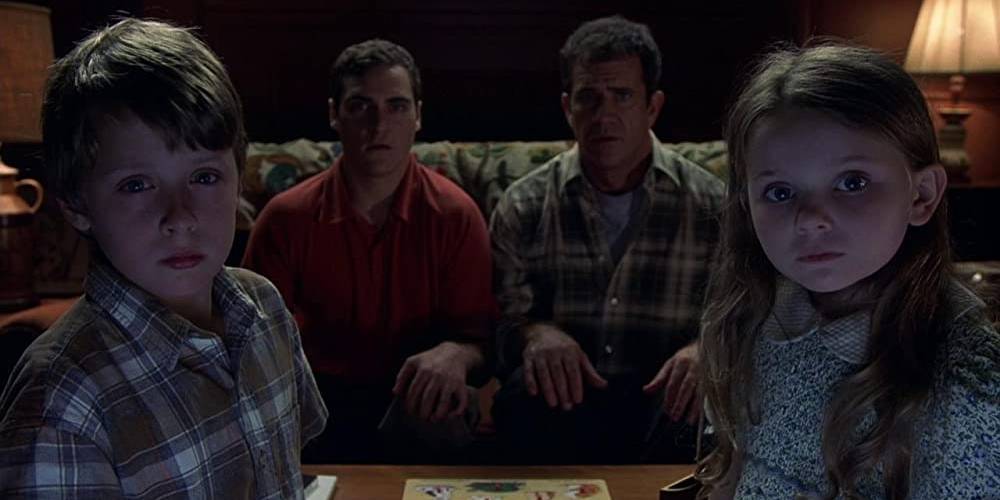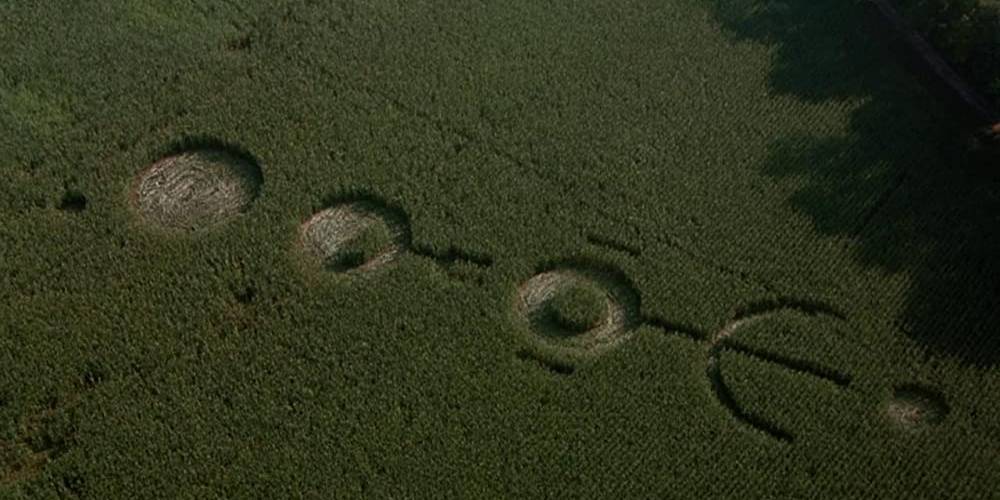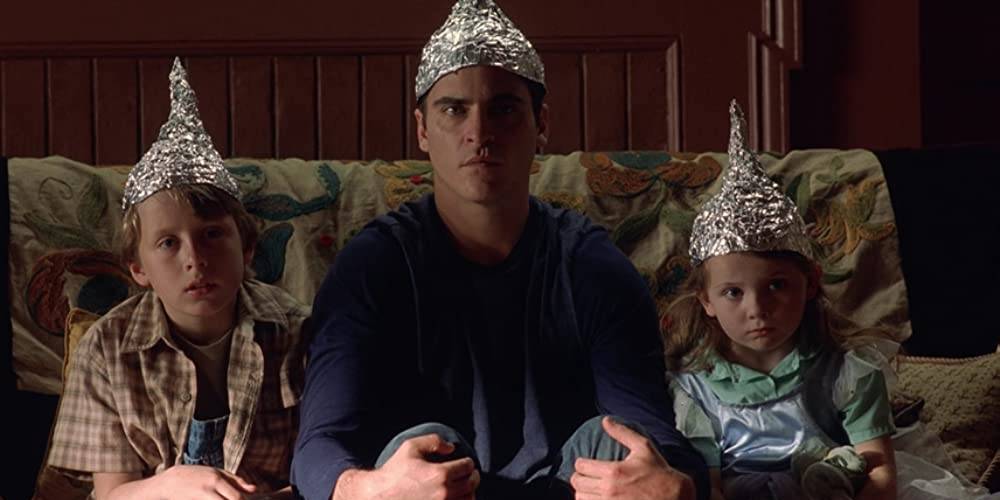M. Night Shyamalan’s alien invasion saga draws its power as much from the perception and presentation of the invasion as it does the event itself.
I am sitting in the waiting room at an Urgent Care in Maine, waiting to see someone about a mild allergic reaction to a bee sting. It is August 2003, and I am thirteen years old. While my mother and I wait, I look up at the muted television, and suddenly I can’t breathe. The news broadcast is carrying a live feed of what I recognize as the Brooklyn Bridge, and to my horror, thousands of people are streaming across it, trying to get out of New York City. My first thought, before I stammer to my mother that she needs to ask for the remote, that she needs to turn up the volume, that she needs to call our family and see if they’re safe, is: It’s happening again. We manage to unmute the waiting room television and watch, frightened, as the news breaks of the massive blackout that has paralyzed the Northeast. No one knows the cause, and I convince myself: It is happening again.
—
It is one year earlier: August 2002. I’m sitting in the movie theater with my little sister and uncle, and we’re watching Signs. As the movie unspools, I find myself terrified not (just) by the UFOs, or by the aliens, or the uncomfortable way I relate to Morgan (Rory Culkin), who is my age and has asthma, too. Instead, I find myself frightened most of all by the television.
I’m frightened of how Bo (Abigail Breslin) asks her father for the remote during a tense conversation about the crop circles in the field out back. I’m frightened of the chilling way she tells him, “The same show is on every station.” I’m frightened most of all by the look shared among the adults, who are afraid that they know what this means: they’re about to witness a news broadcast of something world-changing. History-altering. I don’t like seeing that look of powerlessness — almost an expression of awe — on grown-ups’ faces.
—
It is eleven months earlier: September 2001. I am sitting in sixth-grade science class, watching the television when the Twin Towers collapse. I watch my teacher weeps openly, crying as she turns off the television and tells us we must try to learn something. I am immediately panicked. Is it better to know — to watch — or to protect yourself from having to see? If we’re not watching, if we’re not bearing witness, then absolutely anything could happen. And I convince myself that it will. That it already is. That, at eleven years old, something significant has shifted and will never be the same. After all, my teacher is crying.
—

M. Night Shyamalan’s Signs was in pre-production when 9/11 hit. According to an interview with the Ringer, they began filming several days afterward, shooting the movie in an uncertain new world. The instability of the whole era roils beneath every film frame, especially in the mediated moments—the shots where we watch a television screen within the movie screen. This is how we lived then: any time you turned on the television, you felt like you might be joining an apocalypse in progress, playing catch-up and piecing together a catastrophe beyond your comprehension.
“Some people are probably thinking this is the end of the world,” Merrill (Joaquin Phoenix) tells his older brother Graham (Mel Gibson), a priest who has recently lost his faith, while they watch news broadcasts of the slow-moving alien invasion. Hesitantly, he asks, “Do you think it could be?” Graham allows that it might be, which frightens his brother. He wanted reassurance and comfort, but Graham doesn’t know anything more than Merrill does. The television news broadcast of a paradigm-shifting event is, after all, a great equalizer. How can we guide, placate, and make promises to each other in these moments where it seems it might all come apart?
Signs is shot through with fear of the television. After that first moment when everything is the same on every station, Graham decides they will not watch the news. “People get obsessed,” he cautions his neurotic children. It is better, he thinks, not to know. Eventually, though, he relents, and they see footage they can’t comprehend on the news. “It’s like War of the Worlds,” Merrill marvels, only able to compare his reality to a movie, as many people did in those days when they talked about that action-packed, explosion-filled September morning. It was like a movie.

The two most memorable moments in Signs are both centered around the TV. After Graham has relented, Merrill moves the television into the closet so that he can watch it round the clock, away from the children. “They were starting to get obsessed,” he tells his brother, not acknowledging that he, too, is obsessed. Merrill is alone when he witnesses the news broadcast footage of a birthday party in Mexico. When an alien stalks across the frame, Merrill leaps back from the television set, covering his mouth in horror. We watch him watch the replay, the endless looping of the frightening moment, his eyes filling with tears. “They’ve been playing it all morning,” he will later tell his brother of a different piece of footage. Sitting in the theater, I remember those endless days of watching the same looping footage I watched live that morning in science class. The Towers whole again, then crumbling to dust. Then whole again, then falling. Again and again.
As the movie goes on and the invasion draws near, the mediated frames fall away. Realizing the aliens are above their farm — on the roof! And now, oh my god, they’re in the house! — the family shelters in the basement. The television has been left upstairs, and the radio has fallen silent. “What’s happening out there?” Merrill moans, afraid to ask. Even scarier is Graham’s answer: “I can’t even imagine.”
Thankfully, by the following day, the invasion seems to have stalled, and the aliens are retreating. After hearing on the radio that something has changed, that the humans have won the battle, they creep back upstairs to watch the aftermath on TV. While Morgan recovers from an asthma attack on the couch, Graham agrees to wheel in the television to witness the joyous celebration that Bo says is happening worldwide. Shyamalan’s camera moves close to the television, and when the black, impassive screen comes around the corner, we see in the reflection that an alien has Morgan. My uncle still laughs about how hard I gripped his arm and how I didn’t let go until the film’s end.

The battle that ensues in the living room plays out almost entirely in the reflection of the television or distorted visions through glasses of water. We see the creature’s reflection looking cornered, feral, and evil as it sprays Morgan with poison gas. In several shots, the reflection in the TV allows us to watch as Graham and Merrill watch, to see the horror on their faces as they stare at what we can only see as a smudged, doubled, specter. The abstract horror of the invasion on television has become shockingly intimate and personal. Yet, it’s as if the movie can still only understand it through the mediating frame of the television screen. Then Graham tells his brother, “Swing away.” Merrill grabs a Louisville Slugger from its mount on the wall and goes to work.
Crucially, the killing blow of the bat — the one that sends a shelf of water glasses pouring onto the alien — is delivered in a point-of-view shot straight to the camera, as though we are the invading extraterrestrial being battered by blows. In other words, through the film camera, the television’s reflection, and the power of cinematic identification, we have been invaded. But then the alien shatters the television screen while it falls, and we watch its reflection on the shards of glass as it finally stops breathing.
Signs knows what it’s like to witness the end of the world on television and the twisted catharsis that comes with the world not actually ending. As the film ends, we’re safe for now… at least, until the next time the news comes on.
—
It is March 2003, and my parents have given me a small television for my birthday, which they will allow me to keep in my room. Before long, it’s tuned to CNN every morning, and I check in as much as I can on the invasion of Iraq. When I tell my parents that the American forces have arrived in Baghdad, my parents share a look. “I don’t want you watching that,” my mother tells me. “I don’t want you getting obsessed.” But I need to know, to watch. I begin to stash important editions of the local paper under my bed.
—
It is April 2020 when I feel it again. I am hungover in bed and crying while I watch a montage of footage from around the world, footage of empty cities and desolate roadways. I see a shot of a lonely Brooklyn Bridge, devoid of people, and I think about that day in Maine, and I think about Signs, and science class on 9/11, and about all the times when I’ve thought, “That felt like a movie.” We live our lives through our screens more than ever, experiencing the slow-rolling end of the world through news broadcasts and TikTok livestreams, press conferences on YouTube, and videos on Twitter; our reality fractured more and more and filtered down through mediated frames. It’s all we know now. When I revisit Signs in the early days of the pandemic, hoping that the hope in the film’s final moments will seep through the screen into my reality, I realize that maybe… it’s all we’ve ever known.
—
It is February 2023, and I am sitting in the theater watching M. Night Shyamalan’s Knock at the Cabin. I see Shyamalan working with another mediated apocalypse, another end of the world, playing out on a television in a remote home. I think about how the conspiracy theorists in the movie aren’t just the death cult convinced that the end is nigh, but the queer family forced to view the news as proof of the end. I watch as the characters doubt their own eyes, wondering if the footage on television has been time-shifted, if there’s any way it isn’t real, if they’re being lied to. I think about the anti-maskers, the people whose instinct is to disbelieve everything they’re being told. Mere days later, our own news will be full of mysterious objects shot down by the military all over the country – the sky falling, as it does in Knock at the Cabin – and social media will devolve into a pit of speculation about aliens, about whether the government is lying to us. Am I witnessing the beginning of the end? Or are we in the last stages already? Or is this just the way it always is?